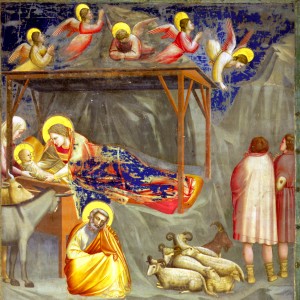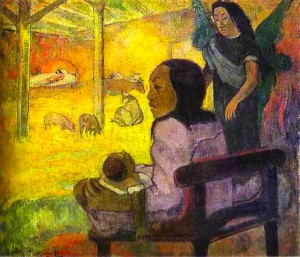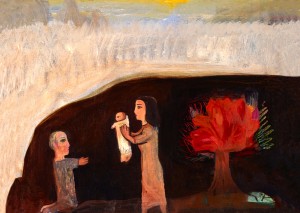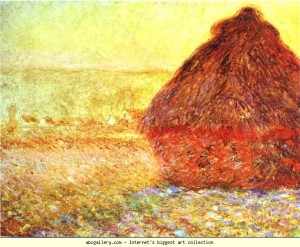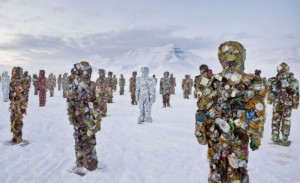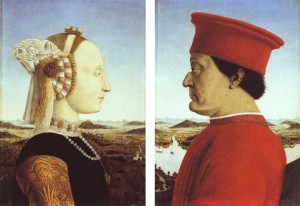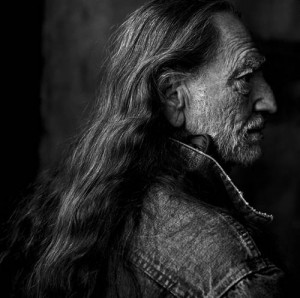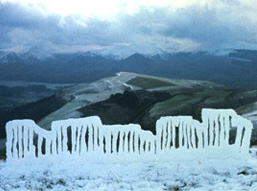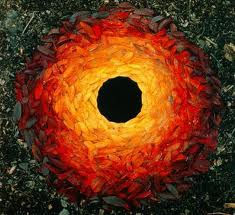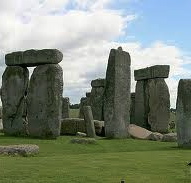Christ is Born!
And the angel said: “this will be a sign for you: you will find a baby wrapped in cloths, and lying in a manger.”
Haystacks…thrilling!
Why do we get that tingling sensation, that sudden wave of emotion, that thrill when we see the haystack paintings of Bruegel, Van Gogh and Monet?
Who would have thought haystacks would be so enthralling? Do they speak to our yearning for a simpler way of life?
We know from brain research that the color yellow arouses feelings of happiness. Yellow is the color of these haystacks.
Some of the greatest artists of our time have devoted themselves to painting these simple images.
The Flemish Renaissance artist, Pieter Bruegel the Elder, would put on disguises so he could participate in the life of the peasants…capturing their field labor and rollicking celebrations in his paintings.
The Harvesters portrays the arduous work of gathering the hay and the peasants’ joy of the well-earned picnic. Bruegel’s use of the golden yellow color of the hay fields is delightful to our senses.
_______________
Hay gatherers are snoozing in Vincent Van Gogh’s famous painting, The Siesta. We sense the slow pace, the pleasure of a nap. Van Gogh uses his signature palette of intense yellows and blues to evoke emotion.
_______________
Claude Monet, the Father of Impressionism, was so charmed in 1890 with haystacks he painted 25 canvases of them! These haystacks are astonishing with the differences in light at various times of day, seasons, and types of weather. They are some of the most beloved works of art in the world.
______________
This Bruegel video is almost as good as seeing his masterpieces in museums!
Click here if unable to view the video.
_______________
For thrilling color, watch this brief van Gogh video.
Click here if unable to view the video.
_______________
Watch this for Monet and all his glory.
Click here if unable to view the video.
2 Art Installations You Won’t Forget!
TRASH PEOPLE
One man’s trash is another man’s treasure!
In today’s world of weird and amazing art some of the most compelling and creative works have been born out of the simplest and most abundant of materials: garbage.
HA Schult is a German installation artist famous for creating an army of 1,000 sculptures made from crushed cans and discarded computer parts. These are the “Trash People.”
The “Trash People” have traveled all over the world, from the parks of New York to the Great Wall of China and to Antarctica.
Astonishingly beautiful, they are meant to cause us to consider what we are throwing away…treasures?
Watch this phenomenal video on the “Trash People.”
Click here if unable to view the video.
_______________
BREAK DOWN
London artist Michael Landy made an inventory of everything he owned: every item of furniture, every book, every piece of food, every cat toy, all his family photos, a valuable art collection, his Saab 900 car…The list took three years to complete and it contained 7,227 items.
Then, in a vacant department store, ironically in the most prestigious shopping area in London, with the help of a large machine and a team of operatives, he set about taking apart and destroying it all. After two weeks nothing but powder remained.
All Landy had left were the overalls he was dressed in, his girlfriend, and his cat.
Landy says the art installation, BREAK DOWN, was not a criticism of consumerism. He wanted to know what it felt like to see how much of his life depended upon what he used, what he owned…and therefore, inspire us to ponder the same.
Over 50,000 people came to watch during the two weeks of the installation, BREAK DOWN.
BREAK DOWN…Hard to imagine? You have to see this outlandish video.
Click here if unable to view the video.
Faces Change…Portraits Change
You live in 15th century in Florence.
You are wealthy and powerful.
You want your portrait painted so your memory will not fade.
Piero della Francesca, arguably the finest painter of the Renaissance, painted a double image of the Duke and Duchess of Urbino facing each other.
The Duke’s face is ruddy and he is robust. He must be painted in profile, as he is missing his right eye and has badly damaged his nose (as you can see!) in a jousting accident. Dressed in a red tunic, he is immediately identified as part of the elite. Only the learned and distinguished may wear the color red, a badge of honor.
Portraits in the Renaissance need not capture the “essence” or personality of their subjects. But it was imperative that the subject’s affluence and honor were celebrated.
The Duchess’ skin is pallid and lifeless. Art historians believe that she died before the portrait could be done and Piero painted her death mask.
Husband and wife are locked in an eternal conversation and indeed their memory has not faded.
Delve a little deeper into the Duke and Duchess’ painting!
Click here if you are unable to see the video.
_______________
He is an incredibly talented Country Western musician from Texas.
He will be 80 years old next year, 2013.
He has been rich, broke, and rich again.
Willie Nelson is an American icon who began his musical career at age eleven. He has won 10 Grammy awards for his outstanding achievements in composing and performing music.
Nelson’s portrait was photographed by Annie Leibovitz, award-winning American photographer.
Leibovitz is well aware that the 15th century Renaissance ideal of portraiture focusing on wealth and position is not relevant to the 21st century.
She attempts instead to show her subject’s “essence”…a piece of his or her personality in her photographs.
Hence, the unfiltered road map of creases in Willie Nelson’s face. Leibovitz’s photograph clearly and unabashedly captures a lifetime of hard living on the road and drug use.
Willie Nelson is still “On the Road Again.”
Click here if you are unable to see the video.
_______________
American presidents are the most powerful people in the world.
American presidents are both honored and reviled.
American presidents have their portraits painted for posterity.
It is startling to see the ebullient portrait of Bill Clinton hanging next to the dark and solemn portraits of Abraham Lincoln and George Washington in the Smithsonian Museum, Washington, DC.
American artist Chuck Close captured Clinton’s charisma and presence perfectly with his unique combination of photo-realism and abstraction.
In 1988, at the pinnacle of his painting career, Chuck Close suffered a collapse of his spinal artery which left him almost completely paralyzed. Although confined to a wheelchair, he has regained partial use of his limbs. The paint brush is strapped to his wrist.
In the years since, Close’s position atop the American art world hasn’t changed. His work is met with rave reviews.
In 2005, Chuck Close photographed Clinton and created a grid on canvas to match the photo. He then painted the image with thousands of bright colored modules.
Standing very near the portrait all you see are gorgeous squares of color. But standing back…
Voilà! President William Jefferson Clinton!
Art…Here Today, Gone Tomorrow!
Andy Goldsworthy
Most of us have had the pleasure of making a little pretend boat out of a leaf and watching it float away down a stream. Or the feeling of sand at the beach between our toes and the reflection that comes when we see our footprints completely erased by the waves.
Scottish artist Andy Goldsworthy’s work is all about these moments of wonder. He explores and seeks intimacy with nature by using twigs, leaves, stones, snow, ice, reeds, and thorns. He assembles them into a kind of sculpture that weather and seasons change and destroy.
Goldsworthy makes his art, it stays for a while, and then it is gone.
The art may disappear but Goldsworthy photographs each piece, the process, and the moments of peak and decay. We may no longer have the art, but we have the memory.
Goldsworthy’s incredible art video!
Click here if unable to view the video.
_______________
Stonehenge
Hey, Andy Goldsworthy isn’t the only artist using nature as his art form!
5000 years ago (the Stone Age), Neolithic builders were erecting what today is Britain’s most treasured monument…Stonehenge. Although the 100 massive stones arranged in a beautiful circular pattern are still puzzling, most archaeologists now consider it an ancient burial ground.
Enter one more artist to the nature party. Jeremy Diller, 42-year-old Turner prize-winning English artist, was asked by the 2012 Olympic committee to make a large piece of art that was British through and through.
The cheeky Diller made an inflatable bouncy Stonehenge! The “art work” is the exact size of Stonehenge (which is huge) and is made for kids and adults to jump and play on. Thousands of Olympic fans did just that…jumped & played. The Brits loved it, but, aware of some “freaky art critics,” as he called them, Diller named his inflatable sculpture “Sacrilege.”
“Stonehenge 2012”
Click here if unable to view the video.

